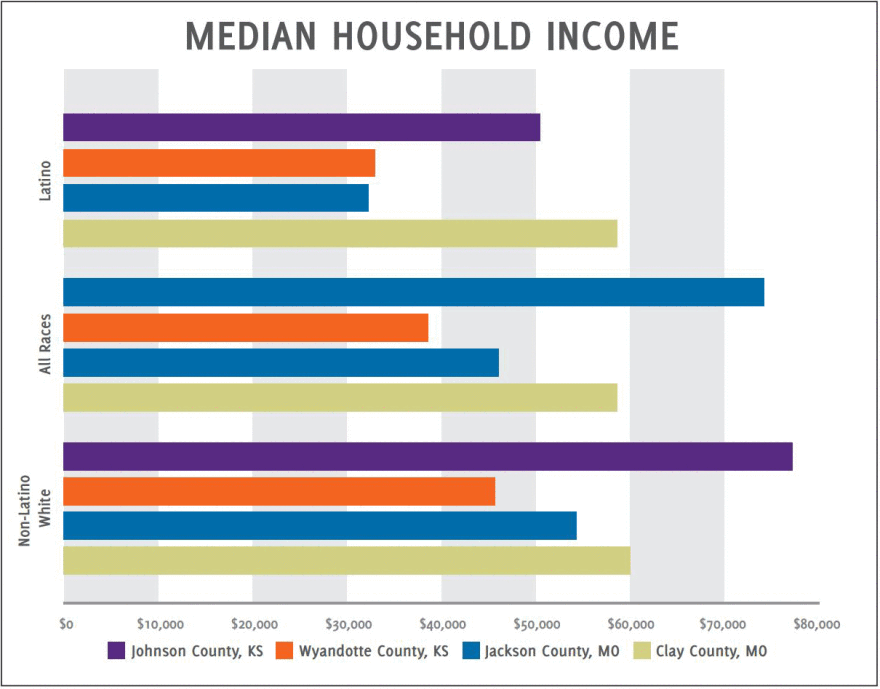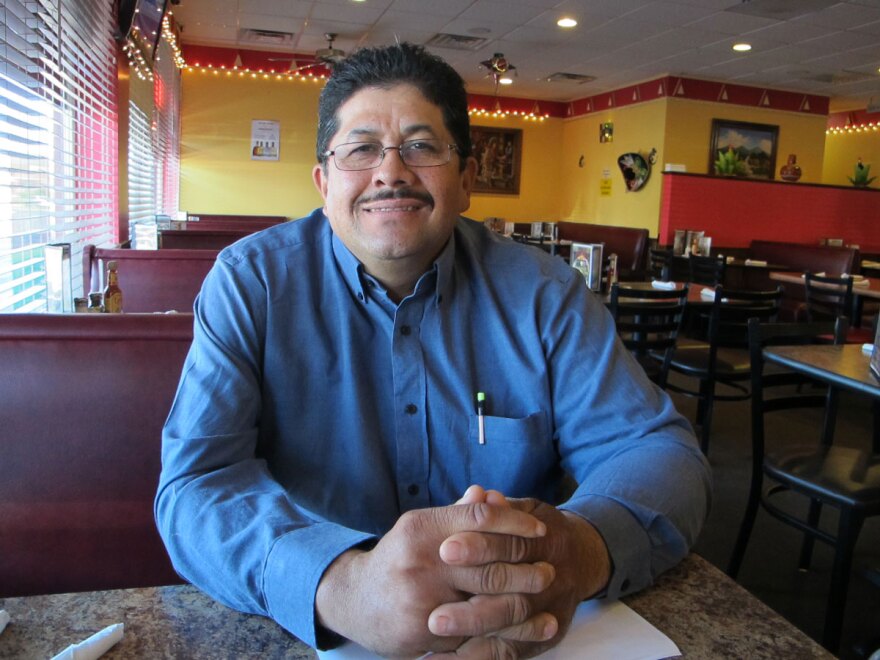Both Wyandotte and Johnson Counties in Kansas have seen their Latino population grow in the past 25 years. And though the highest concentration of Latinos in Kansas City live in Wyandotte County, the numberof Latinos living in both counties is about the same, nearly 40,000 people.
The population is growing at a rate that's fairly new to Johnson County, whose Latino population has nearly doubled in the past 15 years. I talked to Latinos living in both counties about the opportunities and differences between life in both counties.
Continued growth in WyCo
Wyandotte County’s Latino population has deep roots going back to the early 1900s. And it’s seen steady growth — establishing communities in neighborhoods like Argentine and Armourdale.
“In Wyandotte there are many people like us and we feel like we are in our own countries,” says Norma Loya.
Loya is a "promatora," a community health worker who does outreach to Latinos in both Wyandotte and Johnson Counties. She moved here 13 years ago from Mexico.
Loya’s job is through the immigrant service organization El Centro. The same organization where she learned English. “I feel successful,” she says. “I feel that I’ve reached a dream.”
El Centro started in 1976 and has grown to be an institution in Wyandotte County, serving more than 10,000 people a year. They have two offices in Kansas City, Kansas, and their newest location is on Santa Fe Street in Olathe, Kansas.

Why Olathe?
“In Olathe, what’s happening, is some of that movement of Latino community you saw back in —gosh the 90s,” says El Centro Director Irene Caudillo. “When Central Avenue began to see an influx in businesses coming up, and people that are making this their home.”
Caudillo says with that growth comes the need for more services. Latinos make up 10 percent of the population in Olathe. The city is home to two zip codes that have highest concentration of Latino population in Johnson County.
Some attribute the growth to the efforts in city government, who have since the early 2000s have been working to make Olathe a welcoming place for Latinos, regardless of immigration status.
Out of this effort came the Olathe Latino Organization. It aims to provide support for Latinos in areas of housing, health, social services and business development.
Growing opportunities in business and education
Hector Silva was part of the Olathe Latino Coalition when it first started. Silva is Puerto Rican. He moved to Olathe 30 years ago with his wife who is Greek. A new diverse family coming to the neighborhood made the community paper in those days. Now, Silva says you can see the growing diversity throughout the city, as there are more stores and services geared towards Latinos in the area especially along Santa Fe Street and K-7 Highway.
Businesses like Fronteras Mexican Restaurant. Salvador De La Torre arrived in Kansas from Michoacan, Mexico in the 90s. He started as a dishwasher, then eventually opened his own restaurant. De La Torre still struggles with his English, but he has made strides in his business. He now owns three Fronteras locations in Johnson County.
“I hear the schools is really good, and that's why I want to live in Olathe,” he says.
Isabel Gutierrez is from Juarez, Mexico. She has lived in Wyandotte County and Overland Park and has been living in Olathe for the past 25 years. She works for the Parents as Teachers Program through the Olathe School District, offering education and support to parents and kids in both English and Spanish. She says seeking a better education is the reason that her parents decided to leave everything behind in Mexico when she was only a teenager.

The Olathe Public School District has also seen their Latino student population double in the past 10 years. They now offer Spanish translators on-site at schools, and employ people like Gutierrez to give "charlas," or chats, to parents adjusting to life here. Gutierrez says she knows the transition can be hard. “Because we come here, and we want to become part of the system. we want to become part of the culture because you don’t want to be ostracized,” says Gutierrez.
Status, poverty and a sense of opportunity in both counties
According to the Pew Research Institute the population of undocumented people is decreasing in Kansas. El Centro says 20 percent of their clients have issues with status or are undocumented. The largest growing population of Latinos are second and third generation U.S. Citizens. Yet, there is still a stigma about status and cultural differences that Isabel Gutierrez says she's very sensitive to.
“Because we try to take everything out of them, to make them be a USA,” says Gutierrez. “When I work with our community I say, you can keep your culture. Now you are just going to add to your culture.”

Perhaps, one of the largest differences between life for Latinos in Wyandotte and Johnson County is that families in Johnson County on average making $15,000 more a year than those in Wyandotte. This falls in line with the overall wealth differences between the two counties. But according Irene Caudillo from El Centro, that’s not why people live where they live.
“I think when they find a home, a community, a church and a school as well as what they feel is a good paying job to keep the roof over their head and their children fed, they don’t see a county line,” she says.
This look at the Wyandotte / Johnson County line is part of KCUR's months-long examination of how geographic borders affect our daily lives in Kansas City. KCUR will go Beyond Our Borders and spark a community conversation through social outreach and innovative journalism.
We will share the history of these lines, how the borders affect the current Kansas City experience and what’s being done to bridge or dissolve them. Become a source for KCUR as we investigate Johnson and Wyandotte Counties.


